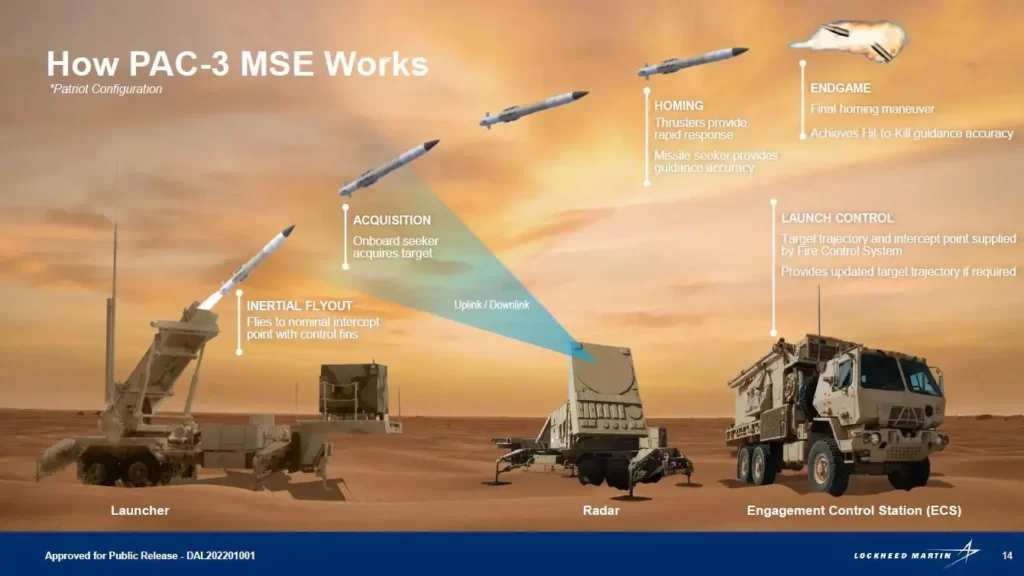The North American company Lockheed Martin and Grupo Oesía have recently signed a Memorandum of Understanding (MOU) to produce components of the Patriot Advanced Capability 3, or PAC-3, missile segment in Spain. According to officially disclosed information, the U.S. firm would offer Oesía the opportunity to manufacture parts of this system for clients worldwide, allowing the European country to pave a new path and join the global community of PAC-3 manufacturer users.
Within this framework, and following a successful transfer of technical knowledge and assistance, Grupo Oesía will manufacture highly specialized PAC-3 MSE electronic cables and harnesses for the PAC-3 MSE global supply chain. “Our collaboration with Grupo Oesía will bring critical industrial capabilities to Spain, enhancing its Integrated Air and Missile Defense (IAMD) capabilities against growing threats,” said Brenda Davidson, Vice President of PAC-3 Programs at Lockheed Martin Missiles and Fire Control.

They also claim that “This agreement, the first based on the Strategic Collaboration Framework Agreement signed during last year’s Paris Air Show, focuses on new opportunities to participate in new and significant national and international technological deterrence programs,” stated Héctor Roldán, COO of Grupo Oesía.
From the Spanish company, they affirm that the PAC-3 MSE will provide greater capability to Spanish Patriot battalions to defend against tactical ballistic missiles, cruise missiles, advanced threats, and aircraft. Héctor Roldán, CEO of Grupo Oesía, has stated that the agreement confirms Lockheed Martin’s satisfaction with Oesía’s operational performance as a recognized elite supplier.

It is worth noting that in October 2023, for a value of USD $2.8 billion, the United States authorized the sale of four batteries and 51 Patriot PAC 3 MSE missiles to Spain. The Spanish government had requested from the United States the purchase of new Patriot missile launch batteries to strengthen its air defense capabilities. Currently, the Spanish Army already has similar capabilities in previous versions of the Patriot grouped in Artillery Anti-Aircraft Regiment No. 73, based in Valencia, which groups the system in its PAC-2 version.
About the Patriot PAC-3 MSE:
The Patriot PAC-3 MSE missiles have incorporated significant changes compared to the original PAC-2 design. One of the noticeable aspects is the reduction in diameter and the introduction of Hit-to-Kill technology. The latter not only allows the destruction of the target’s casing but also ensures a better destruction/damage rate of the projectile’s submunitions. The impact is also on the remnants of the target, which end up falling instead of maintaining the ballistic trajectory.
The PAC-3 features an active seeker radar in Ka-band for final guidance. The missile body also incorporates modifications to achieve better maneuverability, which is also achieved with a set of 180 solid fuel attitude control motors (ACMs) mounted in its front section. Thanks to its lighter weight and new propulsion system, the PAC-3 can defend an area seven times larger than the PAC-2. Each PAC-3 missile weighs 312 kg, housed in independent containers that form quad launchers, which can also be coupled with others, significantly increasing the number of interceptor projectiles.
The new M903 launcher allows the operation of the entire Patriot missile family, capable of receiving various configurations according to user requirements or the theater of operations, gaining flexibility and effectiveness. This capability includes PAC-3 MSE, PAC-3 CRI, or PAC-2 (GEM) missiles.
PAC-3 MSE and CRI missiles are in service and maintain purchase orders in Germany, Japan, the Netherlands, South Korea, the United Arab Emirates, Bahrain, Poland, Qatar, Romania, Sweden, Saudi Arabia, and the United States.
You may also like: The U.S. Air Force has deployed four B-1B Lancer bombers in Spain









